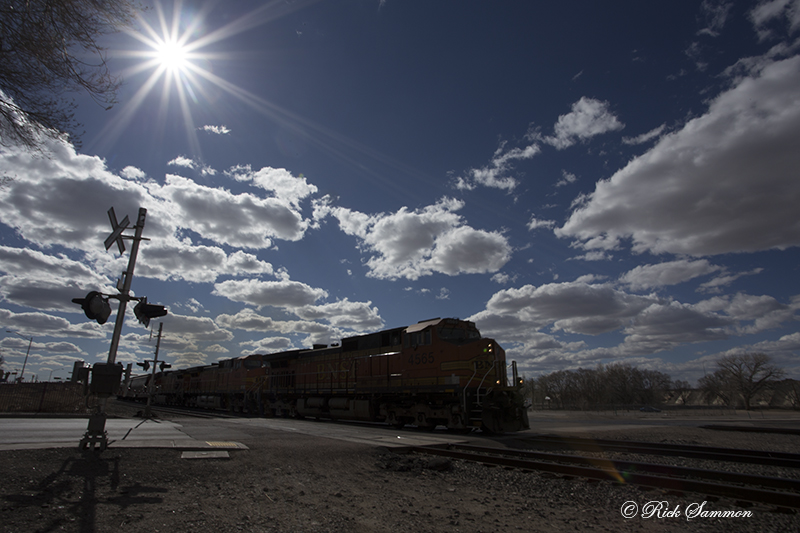Click images to enlarge.
When I teach a photo workshop, I begin by asking each participant, “What is your goal?” I ask that all-important question because setting a goal is important if you want to get a high percentage of good images.
Different photographers have different goals. I thought I had heard ‘em all, until a few years ago. One of my workshop participants, Gary Potts from Las Vegas, Nevada, responded, “I want to make images with impact.”
I helped Gary (a very good photographer by the way) achieve his goal. Gary, like many of my photo workshop participants, helped me, too. Now on my photo workshops, I often give the assignment: make images with impact.
Guess what? I often give myself that same assignment. That is what I did when I spent about an hour with Gary and my wife Susan at Techatticup, Nevada during Photoshop World 2015.
Here are my favorite images from the shoot, along with camera/lens info and some suggestions for making images with impact.
1) Opening Image - Alter time. When we alter time, but using a very fast or very slow shutter speed, we remove some of the reality from a scene. When we remove some of the reality, an image can have more impact. In the opening image for this post, I altered time by applying the Radial Filter/Zoom in Photoshop to the sky area of my photograph. That filter created the impression that my exposure was several minutes long (needed to blur very slow moving clouds), when in fact it was 1/200th sec.
To alter reality even more, I applied the Duplex Filter in Nik Color Efex Pro, which added a painterly-look to the image.
Info: Canon EOS 5Ds, Canon 14mm lens.
2) Above – Shoot HDR. I teach HDR on all of my photo workshops. When I teach HDR, I stress the importance of capturing the entire dynamic range of the scene: from the darkest area to the lightest area. This image was created from a seven-exposure set of RAW images. (Bracketing with 5Ds is quick and easy.) Notice how you can see into the shadows yet the highlights are not blown out. I used Photomatix (my #1 recommended HDR program) to create my HDR image. You can get a discount on Photomatix on my Plug-ins page.
Info: Canon EOS 5Ds, Canon 14mm lens.
3) Above – Get Up-Close-and Personal. If you want the person looking at one of your images to feel as though he or she was right there with you when you took the shot, shoot close to the main subject. Wide-angle lenses let us shoot close, the wider the lens, the closer you can get and still get good depth-of-field.
Wide-angle lenses also let you get everything in the scene in focus, which is how a scene looks to our eyes. The combination of shooting wide and close, and getting everything in the scene in focus, can produce an image with impact. And yes, the dramatic sky in this image, as well as the sky in the follow image, helps to create an image with impact . . . but remember: it’s the way the sky is captured (with a super-wide angle lens here) and processed that adds impact.
This is an in camera HDR (0 EV, -2 EV and +2 EV) image. For this and the following in-camera HDR image, I chose the Art Vivid mode.
Info: Canon EOS 5Ds, Canon 14mm lens.
4) Above – Go Ultra Wide. Following up on using wide-angle lenses, if you want an image with impact, going ultra wide can help. Ultra wide-angle lenses not only help us capture extra wide areas of a scene, but they also bend light and subjects in a cool and interesting way, which can produce an image with impact, as illustrated by the way the clouds are dramatically captured in this in-camera HDR (0 EV, -2 EV and +2 EV) image.
There is something else about this image that creates an image with impact: incredibly sharp detail, which is a testament to the capture quality of the camera’s 50.6 MP image sensor. And speaking of the camera's capabilities, the in-camera HDR is awesome.
Canon 5Ds, Canon 14mm lens.
5) Above – Combine Techniques. This image combines a few image-with-impact techniques: shooting HDR (Photomatix again), going ultra-wide (Canon 15mm lens), getting it all in focus, adding some texture and color in Nik Color Efex Pro, and having an interesting subject, which of course helps us create an image with impact.
Info: Canon 5Ds, Canon 15mm lens.
6) Above – Use Plug-ins. Plug-ins can help create images with impact. Plug-ins can also help us awaken the artist within. I used the BuzSim filter in Topaz Simplify (also listed on my Plug-in page) to create this painterly-quality image, which is a close-up of a section of the rusting truck in the vertical image above. Yes, shooting close-ups is also a technique for creating images with impact, especially when you fill the frame with color and detail.
Info: Canon 5Ds, Canon 24-105mm IS lens.
If you want more tips, tricks and techniques for making images with impact, as well as some image-processing techniques, check out my latest (and 36th book), Creative Visualization for Photographers.
If you like photographing old cars, check out my Capture the Classics workshop in Atlanta (where I took this image) later this year. Good fun in an awesome location.
If you can’t make a photo workshop, check out my KelbyOne on-line classes.
Explore the light,
Rick
















